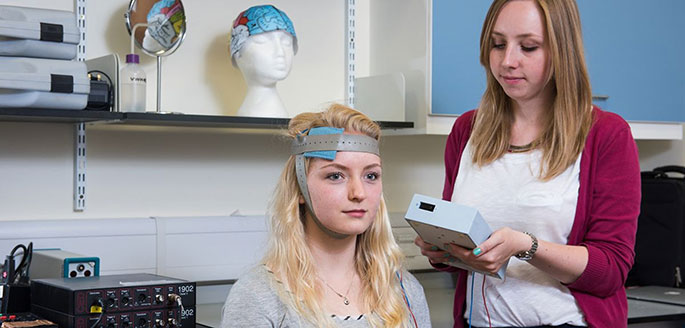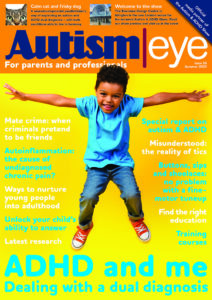A new brain treatment that uses electrical currents can help with repetitive behaviours in autism and improve social skills, research claims.
Hong Kong-based researchers led by occupational therapist Dr Yvonne Han trialled prefrontal transcranial direct current stimulation (tDCS) treatment on autistic teens and young adults.

A patient at Oxford University undergoing tDCS. Image by John Cairns
Treatment ‘not painful’
The therapy sees electrodes placed on the head and the current delivered while the patient is awake.
Medics say the treatment is very different from controversial electroconvulsive therapy, or shock treatment, because the current is around 1,000 times smaller.
Experts insist the treatment is not painful. Reported side effects include a tingling sensation, fatigue, light itching, headaches and, to a much lesser extent, vomiting and sleeplessness.
Research has indicated the treatment can help with depression, brain injury, pain, dementia, fibromyalgia, migraines and strokes.
In the UK, scientists at Oxford University trialled the technique on stroke patients to aid rehabilitation.
Two approaches tried together
Han’s team looked at 105 autistic teens and young adults after 10 days of tDCS.
The researchers also worked on the brain training technique of cognitive remediation therapy.
In these sessions, the youngsters played 10 computer games designed to help with focus, mental flexibility, processing speed and memory.
The researchers found the combination of the two approaches, tDCS and cognitive remediation, is a “safe and effective treatment for improving social functioning”.
‘One of the most promising areas for treatments’
Research charity Thinking Autism said there “have been numerous small-scale studies and case reports on the efficacy of tDCS for improving functioning and behaviours in individuals with autism”.
A spokesperson for the charity said tDCS is “one of the most promising areas for novel autism treatments under development”.
The technique “could potentially improve quality of life for many people with autism”, added the spokesperson.
The study was published in the journal Autism on 8 May.
Related:
Published: 15 May 2023















